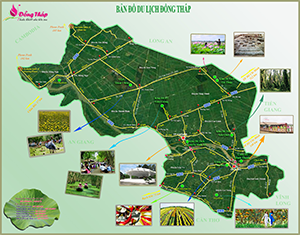Hầm Bí mật Cá Trê
Thông tin chi tiết
Hầm Bí mật Cá Trê: Hầm bí mật để trú ẩn giữ bí mật hoặc cất giấu tài liệu, đây là một bằng chứng cho sự sáng tạo của cha ông ta trong kháng chiến. Về chất liệu, hầm bí mật có nhiều loại khác nhau: có hầm chỉ đào đắp bằng đất (trên là nắp gỗ); có hầm là thùng ván, là lu mái đầm… Nói chung, hầm bí mật phổ biến có hai kiểu. Thông thường là hầm có nắp bằng ván gỗ, làm theo kiểu “máng heo”. Khi xuống hầm, sau khi mở nắp hầm mỗi người cho hai chân xuống trước, xuôi hai tay lên trời và rút người ngồi xuống, sau đó kéo nắp hầm đậy lại. Mùa nước nổi, các hầm kiểu “máng heo” bị ngập nước thì các chiến sĩ cách mạng (chủ yếu là cán bộ chiến sĩ ở địa phương) làm hầm “cá trê”. Hầu hết chọn nơi có gò đất cao và lùm cây, bụi rậm để xây dựng hầm. Có lúc đào trên liếp, lót cây ngang và đắp đất lại thành gò đất cao bên ngoài; sau đó đào ven mương một đường sâu dưới mặt nước khoảng một mét, rộng vừa đủ để người lặn chui vào hầm; ngụy trang kỹ (cỏ, lục bình…) cho phù hợp, hài hòa với khu vực xung quanh. Khi vào hầm phải thận trọng, không làm nước đục nổi bùn hay ướt nhiều cây lá xung quanh. Loại hầm này địch khó phát hiện nên có độ an toàn cao, nhưng người không quen địa hình thì ngại xuống hầm vì phải lặn vô, lặn ra và nếu chẳng may bị địch phát hiện thì khó chiến đấu để thoát thân.
A secret underground trench named “Catfish”
Detailed information
“Ca Tre” - A secret underground trench named “Catfish”: This hidden hideout was built with a view to hiding, keeping secrets and storing documents. Therefore, it surely proved the creativity of our ancestors during the resistance period. In terms of materials, versatile types of trenches can be found : the one which was dug conventionally ( with a wooden cover on top), or crates made from planks, water jars,... In general, a popular secret trench has two types. It is usually the one with wooden planks as cover, imitating the “ trough for pigs” style. On entering the trench, after opening the cover, each person put their legs downward first, then their hands towards the sky and followed by cringing themselves to sit down, closing the lid. When flooding season comes, the “ trough for pigs” - styled trenches are filled with water, so that the revolutionary soldiers ( mainly local cadres and soldiers) invented a “ catfish” trench. They mostly chose somewhere with tall earth mounds, bushes and arbour to build it. Sometimes, they built it on bamboo screens, lined with trees and they banked the external part with dirt until it turned into an earth mound; then they continued digging near the ditch a road nearly 1 meter underwater, wide enough for the soldiers to creep into the trench; the trench was required to be thoroughly disguised ( grass, water hyacinth,..) in order to blend into the natural surroundings. The soldiers needed to remember to be cautious while entering the trench, and try not to muddy the water or wet the trees and grass nearby. Recognizing this type of trench could possibly be the most arduous and challenging task for the enemies. Therefore, it certainly ensured the people’s safety, however, those who are not familiar with the terrain might be unwilling to go inside the trench. They found it risky to continuously dive in and out the trench , if unfortunately, they might get caught by the enemies and stood little chance of escaping.
















